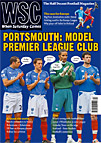 Recent times have taken a drastic toll on football in Luton and south-west London, but things are looking up. After an 18-year gap Andy Brassell returns to Kenilworth Road with AFC Wimbledon
Recent times have taken a drastic toll on football in Luton and south-west London, but things are looking up. After an 18-year gap Andy Brassell returns to Kenilworth Road with AFC Wimbledon
How did we end up here? The last time many of the 1,000-odd Wimbledon fans who made the trip to Luton on February 20 visited was back in April 1992. The home side that day won 2-1 but failed to stave off relegation from Division One, while the visitors went onto become founder members of the Premier League a few months later.
Supporters over 30 on both sides will still have vivid memories of 1988’s FA Cup semi-final at White Hart Lane, when Dennis Wise’s late winner (a rare example of the studs-up finish) sent Bobby Gould’s side through to Wembley to face Liverpool, in the same year Luton were also victorious in a final there – against Arsenal in the Littlewoods Cup.
The first meeting of 2010 was in the middle of a defining spell for Wimbledon, with three successive games, all away, against Cambridge, Luton and Oxford. These were significant not only in terms of this season, as their results could have a strong influence on hopes of making the play-offs, but in what they represent. Wimbledon football club is beginning to return to what many fans would consider its natural level, with three visits to what were established League clubs, something quite unimaginable by this point even in the giddy optimism that followed the club’s 2002 formation. To get from trips to the likes of Godalming & Guildford to Luton in just over seven years is nothing short of extraordinary.
In some ways, not much has changed since 1992. The ubiquitous presence of garish advertising for the local budget airline (which extends to the home team’s strip, a nod to the club’s 1970s kit), and the seating of the Kenilworth End is all that separates today’s stadium from that of 18 years ago. Pretty much any view from the Oak Road End has at least one pylon in the way, and there’s little opportunity for development, at least not without decimating the corporate facilities, an unappealing prospect in the current climate. As the club have known for decades now, they have to move in order to grow.
There is a quite anomalous feel to Luton even being in the Conference. Whereas sides often struggle for a few seasons with increasing desperation at the foot of the fourth tier before falling through the trapdoor marked non-League (Oxford, Wrexham, Chester), the Hatters’ sporting decline has been falsely accelerated by the penalties imposed for financial mismanagement. At the same time, this means that the expectation of going straight back up is much higher than normal for a relegated side.
The two clubs were united early on with a few anti-Milton Keynes chants – the noisiest home fans in the section of the main stand bordering the away section leading the way with “they’ve got no history” – but the regulars were twitchy, betraying the expected anxiety as their side exerted moderate pressure without ever besieging James Pullen in the visiting goal.
After Nathan Elder stabbed the Dons in front against the run of play Luton hit back immediately via Tom Craddock’s emphatic finish, but their fans were never grandstanding or even genuinely confident. Despite their excellent recent form that has taken them into the thick of the play-off pack, their home record has held them back and they lost to relegation contenders Ebbsfleet here three weeks before. Danny Kedwell’s solo effort on 64 minutes for the Dons justified the pessimism and, despite Richard Money’s side pinning Wimbledon in their half of the field for virtually all of the remainder of the match, they failed to extend Pullen, sliding to a fifth home loss of the season.
Luton have stepped up budget cuts significantly since Money took over as manager in October, as they attempt to hastily adjust a wage bill that was that of a Championship side as recently as 2006-07. This reality check, at a fairly early stage of Luton’s non-League odyssey, can only be a good thing. A quick glance at their Conference competitors suggests that attempting to spend your way out of this division is generally a poor, and unnecessary, idea. Staying solvent gives a club the edge over their rivals, as the likes of Aldershot and Dagenham have proven in recent seasons. At the other end of the table, it’s also something that has saved Altrincham. This is the reason why many Conference watchers expect Wimbledon to be challenging in the next season or two and why Luton are wise to tread carefully in their efforts to right their own perceived injustice.
From WSC 278 April 2010